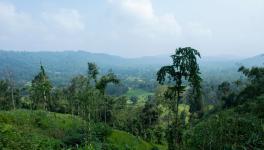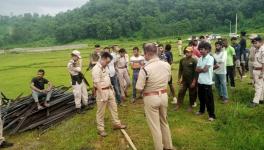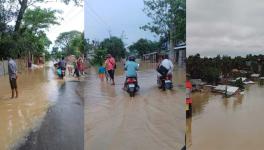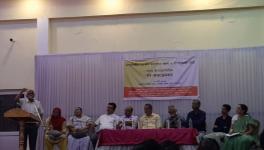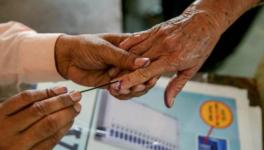In a Central Assam District, Makeshift Covid Care System Became Necessity Despite Extensive Healthcare Networks
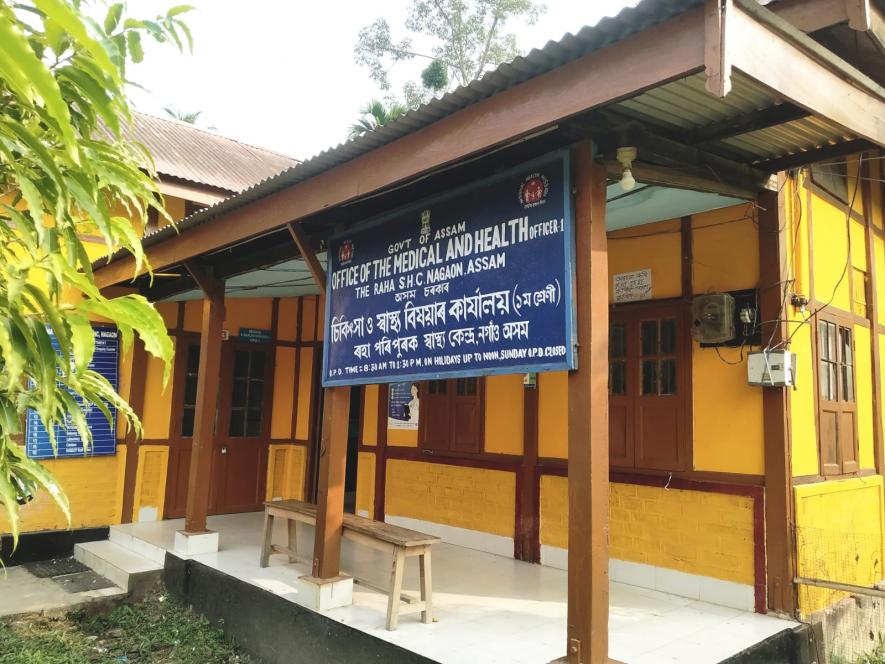
The SHC in Raha under the Barapujia block PHC.
Right in the middle of Assam is the district of Nagaon, which was in news when the COVID-19 second wave was at its peak in the state. For an extended period, Nagaon was among the seven badly hit districts of Assam. A few years back, Nagaon also caught the limelight due to the agitations demanding an AIIMS to be set up in the district. Reports said that even one person was killed in such a protest back in 2016. The AIIMS building is being built in Changsari, a place very near to Guwahati and the popular demand, supported by various local organisations and parties, was to shift it to Raha in Nagaon.
As the mid-point of Assam, an institute like AIIMS in Nagaon would be more beneficial to the people as Guwahati is already flooded with numerous healthcare facilities, the agitators argued in support of their movement. Time flew away and the issue as well, but the pandemic has brought a chance of critically assessing the healthcare system and its delivery.
Nagaon is well connected through roads and is 115 kilometres away from the capital city of Guwahati. The road condition is also in decent shape. The infrastructure of the government health facilities delivering services to the people forms a network that is not at its best. Nonetheless, it begs the question -- why the existing network could not completely be taken in confidence to treat COVID-19 patients. Newsclick travelled through some of the health centres in the district and discovered that ultimately, they had to send those testing positive for COVID-19 to the CCC (Covid Care Center) or some specified Covid hospitals.
Dr Lakhidhar Das, the SDM & HO (Sub Divisional Medical & Health Officer) of the Primary Health Centre (PHC) at Barapujia, has to monitor, manage and guide the testing, contact tracing, and patients’ treatment or vaccination in his block. The Barapujia area continued as a COVID-19 hotspot for some months during the second wave. Newsclick could only meet this busy person in one of the sector hospitals under the Barapujia block PHC. In the Subsidiary Health Center (SHC) in Raha, Dr Das spoke to Newsclick at length, reflecting on several aspects of the health care system.
Dr Das explained that the healthcare structure in the district, “At the top is the district hospital or the civil hospital in a district. Just under it come the PHC (Primary Health Center) at the block level and each of the PHCs will have mini PHCs, the SHCs and the SD (State Dispensary). Again, there are several sub-centres under each block PHCs. All of these form the network of health care system for delivering services to the people”. Moreover, the network is government undertaken.
The Raha SHC, where Dr Das met us, has a capacity of two doctors with four to five nurses. “The SHC caters to nearly 31,000 population,” Dr Das said. He explained further, “This SHC has one Ayurveda doctor as well. This SHC is a part of 11 other sector hospitals under the Barapujia block PHC.”
The Raha SHC does not have the facility of the In-Patient Department, which means it cannot admit patients. However, there is one bed for emergency purposes and deliveries, Dr Das said. Oxygen cylinders, a few, are also available. However, this healthcare structure can provide the preliminary treatment, and in case of any criticality, the patients will have to be shifted somewhere else. As the SHC is not so far from the highway, the doctors also have to deal with accident cases and in case of minor injuries, they can provide some help; the serious ones are referred to the hospitals where better facilities are available. “Although this SHC is not strictly meant for 24 hours service, our doctors and other staff often have to provide services at any hour. They reside in the SHC premises and whenever there is an emergency, the doctors are awakened even at midnight,” Dr Das said.
With this status, how the pandemic was dealt with? Dr. Das and other staff present at there told us, “We conducted the testing and the positive patients were ferried to the CCCs. There were two CCCs in the Barapujia block PHC, one at the Raha college and the other at Chaparmukh.” The CCCs are makeshift facilities arranged during the peak of the wave. These makeshift facilities had oxygen cylinders and concentrators with a team of doctors, nurses and cleaners. However, these were meant mainly for the mildly symptomatic or asymptomatic COVID patients. The serious ones were sent to the Nagaon civil hospital (Bhogeswari Phukanani civil hospital) or other designated covid hospitals, or straightway to Guwahati. “There were nine designated covid hospitals in Nagaon, out of which seven were from the government sector with two from the private,” said one official at the office of the joint director of health, Nagaon.
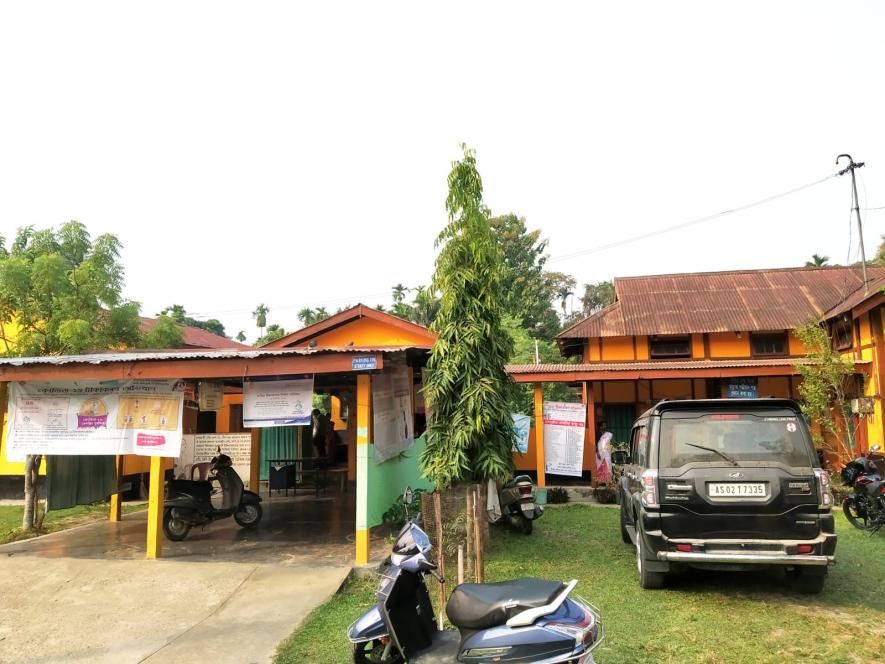
Premise of the Raha SHC
Dr Das admired the stupendous role of the ASHA (Accredited Social Health Activist) workers during the peak of the second wave that ravaged the district. “For testing, tracing and isolating, the ASHA workers worked beyond their capacity. They surveyed the villages and reported to us, which helped carry forward the testing and tracing process. The same happened in the case of the vaccination. “Both the Rapid Antigen and the RT PCR tests were conducted here,” he added.
However, for ferrying the patients to the CCCs, there were no additional facilities of ambulances. The primary mode of transferring the patients was the 108-ambulance service. Dr Das remembered q COVID patient who breathed his last waiting for an ambulance to arrive at the SHC. However, there were not much casualties though, he said.
Moving around 26 kilometres further south from Raha, the Buraguhain Than block PHC wore a deserted look when we arrived. The doctor there, Dr Hazarika, was still present and spoke to us regarding the facilities and the services provided by the PHC.
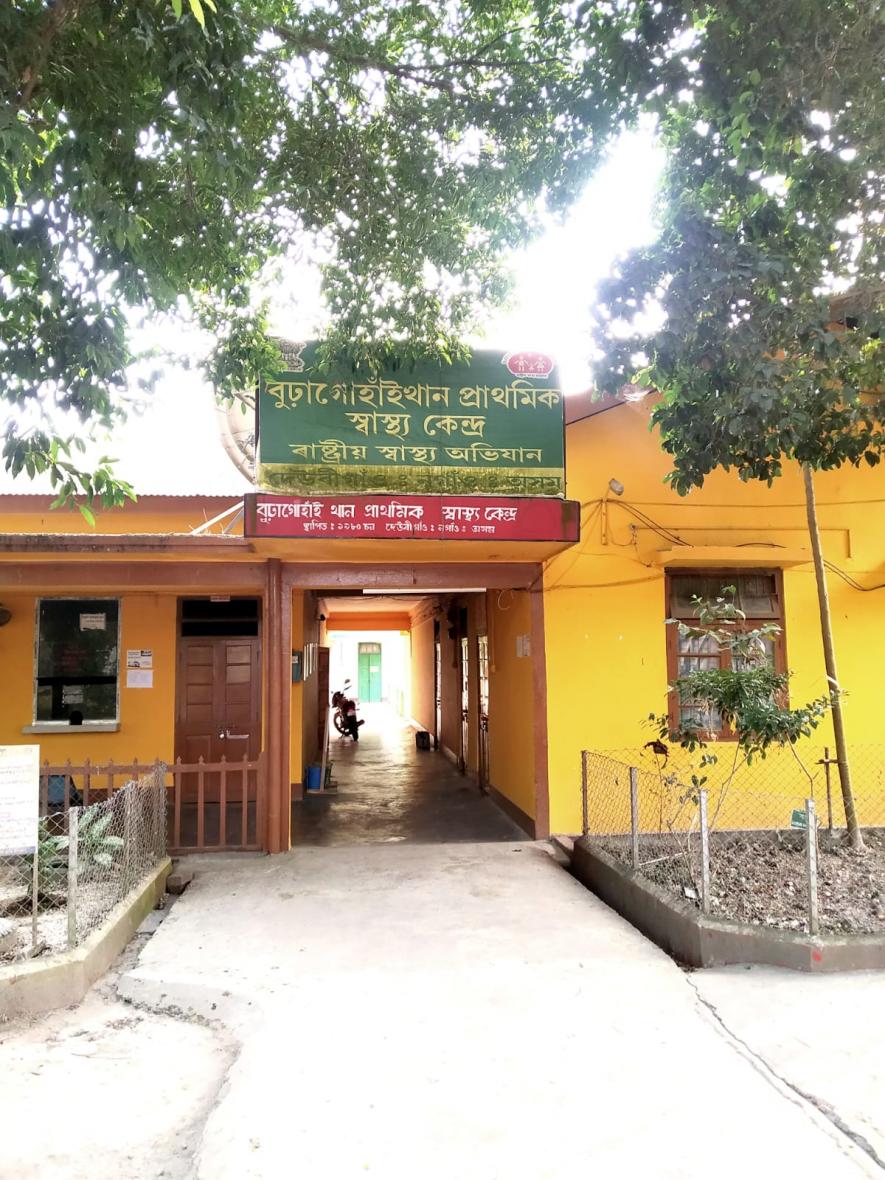
The Buraguhain Than block PHC.
“The block PHC has to cater to over two and a half lakh population. This block PHC has one CHC (Community health centre) and one model hospital under it, along with 13 mini PHCs and SDs. The CHC has three to four doctors, the model hospital has four doctors and the mini PHCs and SDs have one doctor each. The silomoni mini PHC has two doctors”—Dr. Hazarika told us. However, at the block PHC premise, according to him, there are two doctors with 3 GNM (General Nursing & Midwifery) s. This infrastructure has a capacity of 10 beds for admitting patients. The block PHC has facilities for emergency cases and for deliveries. It remains a question how can a 10-bedded hospital functions with such a low man power!
Asked about the measures taken during the COVID-19 wave, Dr. Hazarika replied in exactly the same lines as we experienced in Raha—transferring the positive patients to the CCCs or the Civil hospital. The nearest CCC is around 20 kilometers from there. The Buraguhain Than block PHC conducted testing, tracing with the help of the surveys conducted by the ASHA workers in the villages under its jurisdiction.
However, Dr. Hazarika mentioned an interesting fact. The daily patients that they get in the BPHC has reduced after COVID-19; earlier they used to get over 100 patients some days, but post-COVID the number of patients have reduced to 30/40 with sometimes crossing the 50 mark. Can a mandatory Covid test be a possible reason for this, which incurred fear among the people? Well, the reason is not clear yet.
To the north of the district is the Dhing circle where Muslims constitute the majority (nearly 90%) of the population residing be. The SDM & HO of the Dhing BPHC, Dr D.C. Roy spoke to Newsclick. When asked about the basics he told us’ “In the BPHC premise, there are six doctors, with one gynecologist, one anesthesiologist, a pediatrician and an ayurvedic doctor, while rest two are the MBBS doctors. We have two pharmacists, four laboratory technicians and there are 14 GNMs in this facility” Roy told. “Under the BPHC, there are 6 mini PHCs/SDs/riverine PHC and 32 sub centers”.
Importantly, the Dhing BPHC premise also has the FRU (First Referral Unit) hospital which provides that comprehensive obstetric care services. The BPHC is a 40-bedded hospital.
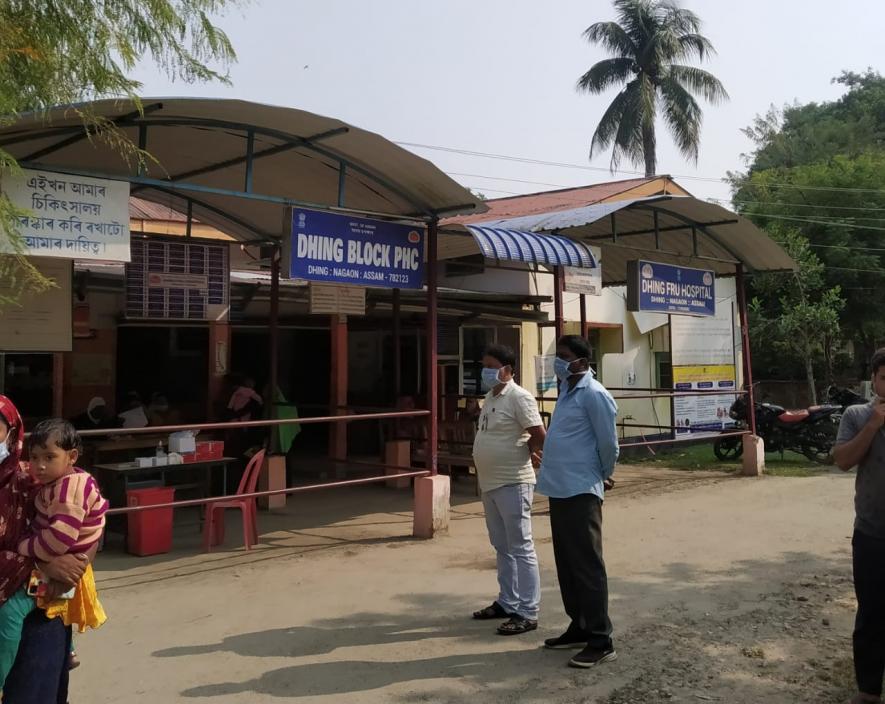
The Dhing BPHC.
Interestingly, the Dhing BPHC with all its existing infrastructure was no different from others in case of handling the COVID-19 cases. They also did conduct testing, tracing, sampling, could not get the opportunity of availing the treatment of the positive patients. Following a similar pattern this BPHC also had to send the positive patients to the CCCs or the civil hospital.
In Dhing there was a CCC in some hostel as someone in the BPHC told us. “We used to send the asymptomatic patients to the CCC and the symptomatic ones to the civil hospital. However, we provided oxygen to some of the positive patients. The CCCs did not have to face scarcity in oxygen supply”—Dr. Roy told.
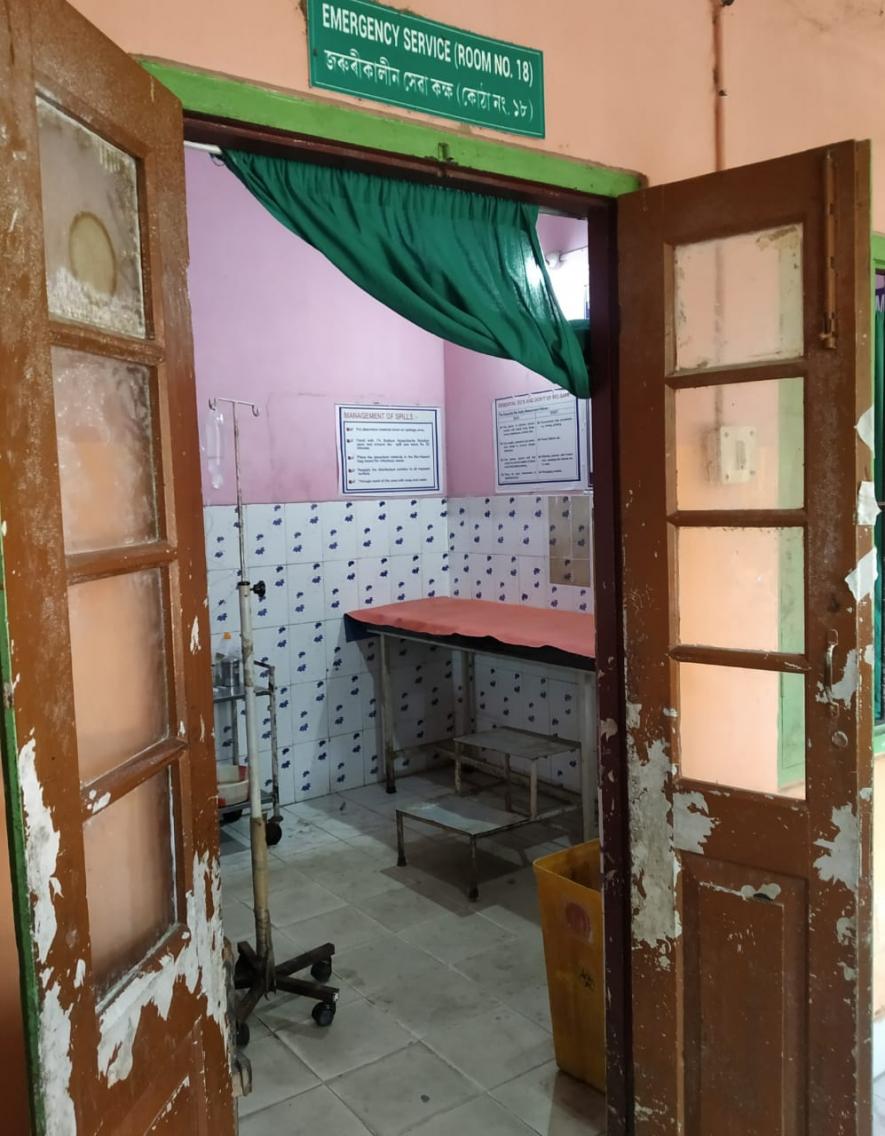
The emergency service room in the Dhing BPHC.
Moving further south east from Dhing, there is another BPHC in Samaguri. The Samaguri BPHC is a little interior in comparison to others visited by Newsclick. However, it is well connected by roads. Reaching the Samaguri BPHC, we were greeted by a lady doctor who is senior doctor posted in the BPHC. She told us that the BPHC premise has 3 doctors with 6 GNMs and 1 ANM (Auxiliary Nurse Midwife). However, the Samaguri BPHC has the facility of an NRC (Nutritional Rehabilitation Center) and we could meet two of the children admitted there, both suffering from acute malnourishment.
The Samaguri BPHC has been similar in tackling the COVID-19 waves. It had to ferry the positive patients either to CCCs or other designated hospitals for treatment. The lady shred some of the horrendous experience she and her staff faced during the peak— “Many of the villagers were resistant to go there and they tried to escape from our BPHC after we declared. We had government instruction to send patients to designated institutional facilities. Moreover, we had to wait, sometimes for long, for an ambulance to have reached here. In this time, some patients tried to escape from the BPHC campus, which was dangerous.”
So, the general trend in Nagaon, from the perspective of tackling the pandemic, is the setting up of the CCCs, the makeshift arrangements built here and there for handling the positive patients. The CCCs were mainly to deal with mild or asymptomatic patients, while serious cases were referred to other higher-level hospitals. Despite having an extended network of health infrastructure in the district, why the existing facilities were not relied upon remains a question to many. The CCCs were absolutely temporary and the facilities like oxygen cylinders, concentrators etc. provided there could have reached the existing PHCs, SDs or mini PHCs.
Dr D.C Roy commented on this saying, “As the PHCs and other hospitals were functioning for dealing with other patients, admitting COVID patients would have created a problem here. Our infrastructure did not allow a separate ward for COVID patients within the premise of the BPHC. Moreover, as this is a residential PHC, the doctors would have gotten infected.”
(The reporter’s research was supported by a grant from Thakur Family Foundation. Thakur Family Foundation has not exercised any editorial control over the contents of this research.)
Get the latest reports & analysis with people's perspective on Protests, movements & deep analytical videos, discussions of the current affairs in your Telegram app. Subscribe to NewsClick's Telegram channel & get Real-Time updates on stories, as they get published on our website.











